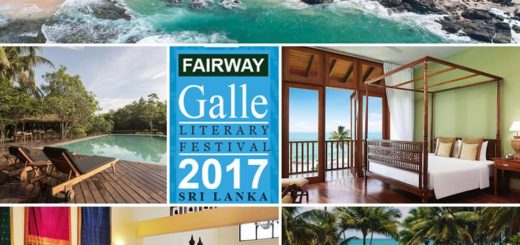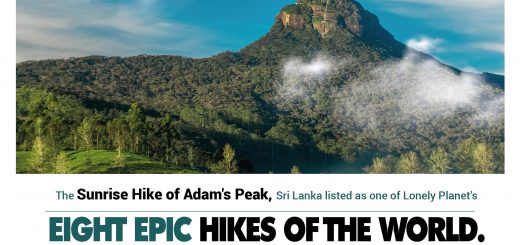Discover Sri Lanka with Sanka
by Jetwing ·
Horogolla National Park

This’s the only national park & forest in the Western provinceof Sri Lanka. The park is stretched over a 33 acre land. On one side of the park is the “Hora Kelle Reservoir” which helps a lot of farmers in the area with their agricultural needs.
History
In 1970 the government of Sri Lanka enacted the Land Act where one person can own only 50 acres of land. The excess land was to be given to the government. The Horagolla National Park was gifted to the government by the politically famous Bandaranayaka family. In 1973 the land was declared a Sanctuary. By this time there had been a herd of spotted deer in the park. However over time this population has died off. On the 5th of April 2005 (some say its 2004, but it was actually delayed to 2005) the Sanctuary was converted into a National Park.
The National Park
The Horagolla National Par kis classified as a low country evergreen secondary rainforest with a 28 degree Celsius average temperature. A secondary forest is a rainforest that has been disturbed in some way, naturally or unnaturally. Secondary forest can be created in a number of ways, from degraded forest recovering from selective logging, to areas cleared by slash-and-burn agriculture that have been reclaimed by forest. Generally, secondary forest is characterized (depending on its level of degradation) by a less developed canopy structure, smaller trees, and less diversity. Due to the lack of a full canopy, more light will reach the floor, supporting vigorous ground vegetation. “Jungle” is the term often applied to secondary forest with dense ground growth. The park is named after the Dipterocarpus zeylanicus (Hora) trees which are found in abundance in the park. The Horagolla National Park is situated in the heart of the busy city of Nittambuwa. The forest is acting as a natural air filter for the area & this has a great effect on the town’s population. The town’s heart related illness rate is significantly low due to the high level of Oxygen being emitted from the park.
2000 – 2500 mm rainfall is prominent in the national park. There’re 10 different species on mammals such as the Fishing Cat, Sri Lankan Spotted Chevrotain, Golden Jackal, and Grizzled giant squirrel. There’s a 150 acre land next to the national park which the Sri Lankan Spotted Chevrotain (Olu Muwa) uses to feed. The entire park’s floor is covered with fallen leaves which make it impossible for the Chevrotain to find grass to feed upon. There’re about 7-8 Chevrotains in the park, but however it should be noted that they spend most of their time on the land next to the park & they come in to the forest only to sleep.
Horagolla is considered a bird watching site. The number of bird species recorded from the park is 64. However the birds cannot be seen by the naked eye due to the extensive tree growth. Many tourists use professional equipment to spot & take very good photographs. The most common are Parakeets, Black-crested Bulbul, Barbets, and Asian Koel. Some of the other bird species seen in the park include Sri Lanka Grey Hornbill, Sri Lanka Hanging Parrot, Layard’s Parakeet and Oriental Dwarf Kingfisher.
Also are some 28 varieties of butterflies in the park with the rare Clipper, Ceylon Birdwing and Blue Mormon. There’re 07 varieties of fish in the reservoir, with a crocodile to make things a little interesting to the visitors.

Flora & Fauna
The park is a high bio-diversity hot spot with a lot of tree species. Dipterocarpus zeylanicus (Hora), Canarium zeylanicum (Kekuna), Dillenia retusa (Godapara), Caryota urens (Kitul), Pericopsis mooniana (Nedun), Mangifera zeylanica (Atamba), Sacred fig, Alstonia scholaris (Ruk Attana), Acronychia pedunculata (Ankenda), Vitex pinnata (Milla), Mimusops elengi (Moonamal), Breadfruit and Pterospermum canescens (Velang) are among the most prominent.

There’re many endemic trees in the park such as Korasa, Hora, Etamba, Ruk, Eeriya, Godapara,WalDel, Heen Kebilla, Weli Piyan.
Some of the globally widespread trees in the park are Ruk Aththana, Wal Kaduru, Kaha Penella, Balu Nakuta & Maha Bovitiya.
There’re many varieties of Orchids as well.
Several herbal plants such as Venivel, Ankenda, Ulkenda, Kumbuk, Bakmee, Panampethi, Ruk Aththana were also present.
What’s most prominent about the park was that many trees were depending on other trees for survival. There were quite a few of them.


Also there were many snake dens as well. Even though we didn’t witness any snakes or pythons, we were told that there were quite a few who lived there.

Important Facts about the National Park
The park is situated 40 KM from Colombo (45 – 60 minutes drive). Proceed straight down the Kandy road to Nittambuwa (pass the Bandaranayaka memorial) & from the color light junction, turn left to the Weyangoda road. (Just before the junction you’ll find a small Food City Supermarket on to your left which is open from very early morning hours.) From the Weyangoda road, turn left, just before the 3 KM mile post (after passing a paddy field) into Pinnagolla road & proceed about 1 KM. The national park entrance is to the left. The Pinnagolla road condition is a bit bumpy but cars can go easily. However a mini coach would be a tight squeeze & a big coach is out of the question for this road.
The park has a unique entrance to it with about a 5 feet wide path. It’s like squeezing through a tight cave & coming out into a heavenly sanctuary. The mist covered reservoir with the thick forest in the back ground is simply breathtaking. You will have to walk over the bunt of the reservoir to get to the national park.

Parking facilities are minimal but there’re some bare lands at the entrance where the locals allow you to park the vehicles free of charge. The entrance fees are low compared to the other national parks.
Foreign Adult – US$ 10
Foreign Child – US$ 5
Local Adult – Rs. 46
Local Child – Rs. 23
School Children (in uniform) – Rs. 12
The park is open 365 days of the year from 8 AM to 6 PM. The contact numbers are as follows;
General Line – 0332287877
Nisansala (Mr.) – 0714227223 (National Wildlife Representative)
Hasitha (Mr.) – 0777187738
Guiding facilities will be provided on request to spot certain trees & animals. (Please provide a good tip) Otherwise you can enter the park on your own to make your own discoveries. The park is equipped with a museum which houses crocodile, fishing cat, leopard skins, some skeletons of the pythons, fishing cats & many more.

The park has a couple of basic but clean wash rooms for the guests as well. Just before you finish your nature walk in the Horagolla National Park, you can have a well deserved nature rest in the hut constructed over the reservoir overlooking magnificent water scenery.


Tourism Benefits
This is a National Park which can be used like the Royal Botanical Gardens of Peradeniya, where the tourists can take a nice relaxing stroll down the nature’s most diversified trail while staying in Colombo. We did the nature trail barefoot, which was an out of this world experience.

A half a day excursion can be made to the Horogalla National Park & back. En route to the park, you can witness some marvelous Buddhist temples. In the evening en route to Colombo you can visit the Kelaniya temple – a holy place visited by the Lord Buddha.





